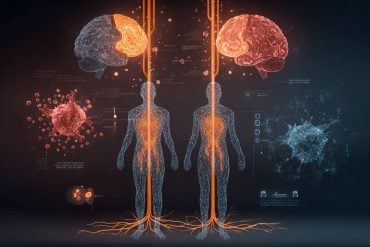Summary: A large-scale U.S. study reveals that Takotsubo cardiomyopathy—also known as broken heart syndrome—continues to carry a high risk of death and severe complications, with no improvement in outcomes from 2016 to 2020. Often triggered by extreme emotional or physical stress, the condition mimics a heart attack and primarily affects older women, though men experience more than double the mortality rate.
In-hospital deaths reached 6.5%, and complications such as heart failure, stroke, and cardiac arrest were common. The findings highlight the urgent need for improved diagnostics, early intervention, and targeted treatments for this often misunderstood condition.
Key Facts:
- High Mortality Rate: In-hospital death occurred in 6.5% of cases, with no decline over five years.
- Sex Disparity: Men faced a mortality rate of 11.2%, more than double that of women (5.5%).
- Frequent Complications: Over one-third developed heart failure; stroke and cardiac arrest were also common.
Source: American Heart Association
Takotsubo cardiomyopathy, also known as broken heart syndrome, is associated with a high rate of death and complications, and those rates were unchanged between 2016 and 2020, according to new research published today in the Journal of the American Heart Association.
Takotsubo cardiomyopathy is a stress-related heart condition in which part of the heart temporarily enlarges and doesn’t pump well. It is thought to be a reaction to a surge of stress hormones that can be caused by an emotionally or physically stressful event, such as the death of a loved one or a divorce.
Credit: Neuroscience News
It can lead to severe, short-term failure of the heart muscle and can be fatal. Takotsubo cardiomyopathy may be misdiagnosed as a heart attack because the symptoms and test results are similar.
This study is one of the largest to assess in-hospital death rates and complications of the condition, as well as differences by sex, age and race over five years.
“We were surprised to find that the death rate from Takotsubo cardiomyopathy was relatively high without significant changes over the five-year study, and the rate of in-hospital complications also was elevated,” said study author M. Reza Movahed, M.D., Ph.D., an interventional cardiologist and clinical professor of medicine at the University of Arizona’s Sarver Heart Center in Tucson, Arizona.
“The continued high death rate is alarming, suggesting that more research be done for better treatment and finding new therapeutic approaches to this condition.”
Researchers reviewed health records in the Nationwide Inpatient Sample database to identify people diagnosed with Takotsubo cardiomyopathy from 2016 to 2020.
The analysis found:
- The death rate was considered high at 6.5%, with no improvement over period.
- Deaths were more than double in men at 11.2% compared to the rate of 5.5% among women.
- Major complications included congestive heart failure (35.9%), atrial fibrillation (20.7%), cardiogenic shock (6.6%), stroke (5.3%) and cardiac arrest (3.4%).
- People older than age 61 had the highest incidence rates of Takotsubo cardiomyopathy. However, there was a 2.6 to 3.25 times higher incidence of this condition among adults ages 46-60 compared to those ages 31-45 during the study period.
- White adults had the highest rate of Takotsubo cardiomyopathy (0.16%), followed by Native American adults (0.13%) and Black adults (0.07%).
- In addition, socioeconomic factors, including median household income, hospital size and health insurance status, varied significantly.
“Takotsubo cardiomyopathy is a serious condition with a substantial risk of death and severe complications,” Movahed said.
“The health care team needs to carefully review coronary angiograms that show no significant coronary disease with classic appearance of left ventricular motion, suggesting any subtypes of stress-induced cardiomyopathy. These patients should be monitored for serious complications and treated promptly.
“Some complications, such as embolic stroke, may be preventable with an early initiation of anti-clotting medications in patients with a substantially weakened heart muscle or with an irregular heart rhythm called atrial fibrillation that increases the risk of stroke.”
He also noted that age-related findings could serve as a useful diagnostic tool in discriminating between heart attack/chest pain and Takotsubo cardiomyopathy, which may prompt earlier diagnosis of the condition and could also remove assumptions that Takotsubo cardiomyopathy only occurs in the elderly.
Among the study’s limitations is that it relied on data from hospital codes, which could have errors or overcount patients hospitalized more than once or transferred to another hospital.
In addition, there was no information on outpatient data, different types of Takotsubo cardiomyopathy or other conditions that may have contributed to patients’ deaths.
Movahed said further research is needed about the management of patients with Takotsubo cardiomyopathy and the reason behind differences in death rates between men and women.
Study details, background and design:
- The analysis included 199,890 U.S. adults from across the nation (average age 67; 83% of cases were among women). White adults comprised 80% of the Takotsubo cardiomyopathy patients, while 8% were Black adults, 6% were Hispanic adults, 2% were Asian/Pacific Islander adults, 0.64% were Native American adults and 2.2% were reported as Other.
- The Nationwide Inpatient Sample database is the largest publicly available source detailing publicly and privately paid hospital care in the U.S. It produces estimates of inpatient utilization, access, cost, quality and outcomes for about 35 million hospitalizations nationally annually.
Co-authors, disclosures and funding sources are listed in the manuscript.
About this cardiovascular disease and mortality research news
Author: Bridgette McNeill
Source: American Heart Association
Contact: Bridgette McNeill – American Heart Association
Image: The image is credited to Neuroscience News
Original Research: Open access.
“High Mortality and Complications in Patients Admitted With Takotsubo Cardiomyopathy With More Than Double Mortality in Men Without Improvement in Outcome Over the Years” by M. Reza Movahed et al. Journal of the American Heart Association
Abstract
High Mortality and Complications in Patients Admitted With Takotsubo Cardiomyopathy With More Than Double Mortality in Men Without Improvement in Outcome Over the Years
Background
Takotsubo cardiomyopathy continues to be a major cause of mortality and morbidity. The goal of this study was to evaluate the outcome data of patients with Takotsubo cardiomyopathy using a large inpatient database.
Methods and Results
We used the Nationwide Inpatient Sample database for our study. We evaluated trends, mortality, and complications of patients admitted with Takotsubo cardiomyopathy from available years 2016 to 2020 in adults >18.
A total of 199 890 patients with Takotsubo were found in our database with 83% being female and higher prevalence with age, White race, and highest income. Mortality was high at 6.5% with no significant improvement over the years studied.
Furthermore, major complications were substantial. Cardiogenic shock occurred in 6.6%, atrial fibrillation in 20.7%, cardiac arrest in 3.4%, congestive heart failure in 35.9%, and stroke in 5.3%. Mortality was more than double in men in comparison to women (11.2% versus 5.5%).
Conclusions
Takotsubo cardiomyopathy is associated with high mortality and complications with no improvement in outcome over the 5‐year study with higher mortality in men. Further improvement in care is needed to improve outcomes.








